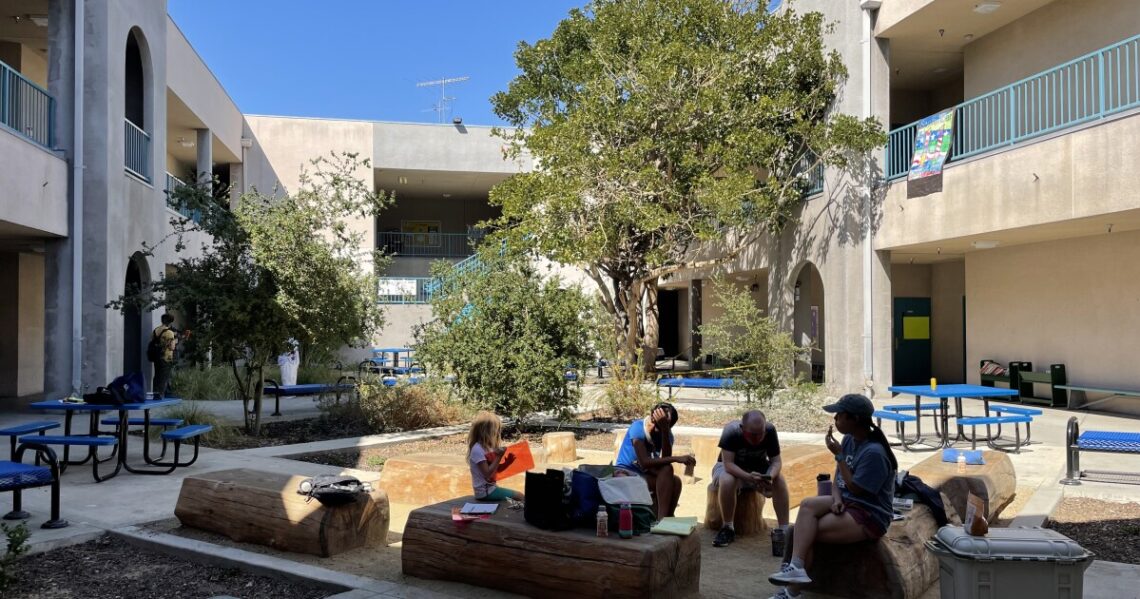A policy brief published last month by the UCLA Luskin Center for Innovation offers a series of recommendations on how education and building codes can help schools become more heat-resilient in the face of global warming. State Sen. Caroline Menjivar, a Democrat, introduced legislation this year requiring schools to have heat plans by 2027, and another bill would make it easier for schools to create more shaded spaces.
“Obviously, the California Education Board wasn’t set up to think about climate change. But now that climate change is a reality, virtually every sector is going to have to think about it,” said V. Kelly Turner, an urban planning associate professor and the director of the Luskin Center.
The center’s recommendations include steps such as setting an indoor temperature limit, documenting the air-conditioning and shade infrastructure of each school, and investing in shade and greenery for play areas. The brief also calls out areas needing more research, such as the safest indoor temperature range.
The best way to keep kids cool is perhaps the most obvious: providing shade, which can reduce the heat stress experienced throughout the day by 25% to 35%, according to the Luskin Center.
That requires reconfiguring playgrounds to make them cooler, said Perry Sheffield, a pediatrician and an environmental medicine researcher at Mount Sinai in New York City. In addition to shade, swapping heat-absorbing materials like asphalt and rubber for grass and wood chips helps cool things down.
“The more we can encourage play as well as physical activity, the healthier our kids are going to be, so figuring out a way to do that safely is really key,” said Sheffield.
On a playground in the San Fernando Valley, Turner said she once measured 145-degree…
Read the full article here







